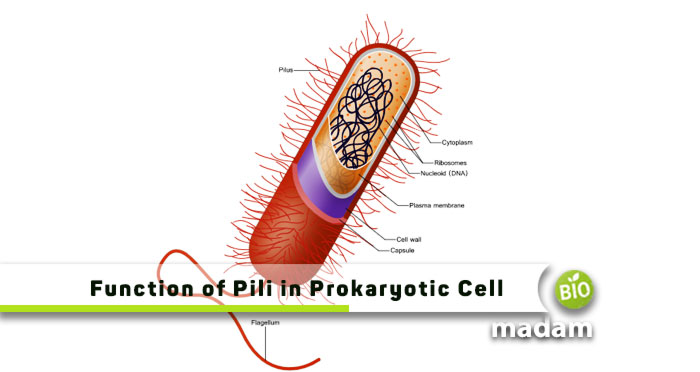Prokaryotic cells are quite different from eukaryotic cells and contain structures absent in eukaryotes. These structures perform specific functions that may not be possible for the prokaryotic cell if they were absent. Pili is one such part of the cell essential for adherence to the host cell, especially in bacteria and viruses.
Structure of Pili
Pili is the first external structure of the bacterial cell. They are thin protein fibers coming out of the cell surface. They are adhesion proteins that help stick to the host. Pili are simple in structure and look like tiny, thin hairs.
Types of Pili
Prokaryotes, particularly bacteria, have different forms of pili. You must be thinking about what types of pili do bacteria have? We have mentioned below the primary types of pili.
Type IV Pili
They are found primarily on gram-negative and some gram-positive bacteria. They are tube-like structures that originate from the membrane. Their flexibility enables them to perform their functions effectively. These pili are also made of Pilin protein polymers that construct the Type IV pili filament. Pilin may be phosphorylated or glycosylated. During pili formation, a protein called Secretin creates an oligomeric gated channel in the bacterial membrane for them to come out.
Conjugative Pili
Conjugative pili are also sex pili, most commonly found in bacterial pili. They can be seen under high-quality compound microscopes or electron microscopes.
The microscopic structure of conjugative pili shows that the appendages retract and elongate continuously. These pili are involved in transferring genetic material from one bacterium to another.
They are composed of protein pilin that may be arranged in pentamer or spiral-like layers. As pili emerge from the bacterial membrane, they also consist of phospholipids, forming a protein-phospholipid complex. However, the arrangement has been observed to differ from the cell membrane.
Type V Pili
Type V is another type of pili, yet they are not common. They are specifically found in the bacterial class Bacteroides. These pili offer adhesion and help in biofilm synthesis in bacteria.
Function of Pili
The function of pili in prokaryotic cell is particular, but what does the pili do in a prokaryotic cell? Each type of pili is involved in a different function that helps the bacteria in one way or another. While the primary role of pili is in adhesion, they perform numerous other functions as well. Let’s have a look at all of them.
Locomotion
Although locomotion mainly occurs through flagella, a basic structure in bacteria, sometimes pili are also seen to facilitate movement. Their role in motility is due to their retraction, making it possible for the cell to move forward through twitching motion.
Adhesion
Adhesion is the main function of pili in prokaryotic cells as they help the bacteria to adhere to the hosts and other surfaces besides enabling adhesion to other bacteria.
Biofilm Formation
Biofilm is the gathering of microbes in one place in a way that allows them to overcome unfavorable conditions. Pili help in the formation of microcolonies and eventually aid in biofilm maturation.
Conjugation
Conjugative bacteria are actively involved in conjugation, transferring genetic material, DNA, from one bacterium to another. They connect the cytoplasm of both cells and enable DNA molecules to pass through the pilus.
Besides adhesion, motility, and biofilm formation, pili are also involved in protein production and electrical conductivity.
Conclusion
Like any other part of a bacterial cell, pili are the most important ones! Not only do these structures help the bacterial body perform the above functions, but they also prevent WBCs from attacking. The prokaryotic organism, bacteria, is incomplete without this structure.

Anna has completed her degree in Pharmacy from the University of Hawaii. She is serving as a research assistant in a pharmaceutical company. She had a great interest in writing blogs, traveling to different parts of the US, and trying delicious recipes in her spare time.

